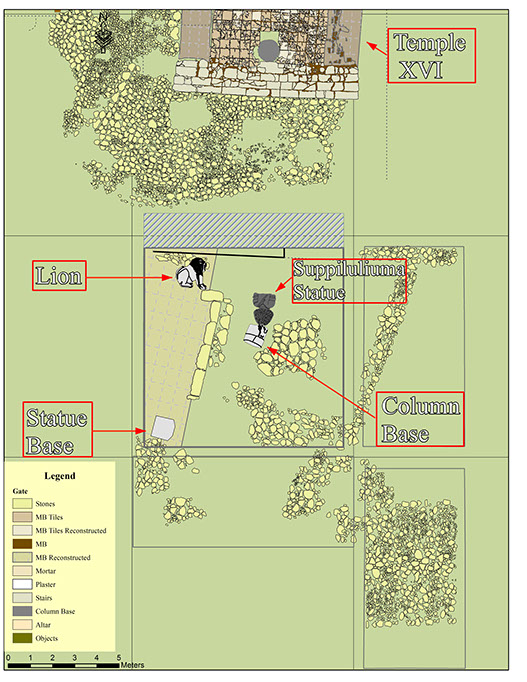
Plan of Field 7 "Gateway" structure and the find-spots of the various sculptural pieces (above). (Right) Images of the excavations of the statue and column base, with a detail of the face of the King.
In 2012, excavations continued in Field 7, in an effort to understand the context of the lion statue uncovered in the previous season, another unexpected discovery was made.
Rather than uncovering further evidence of a gate system, more of the cobble paving, similar to what is found around Temple XVI was uncovered. Deposited in a pit cut into this paving were two more monumental works of art. An elaborately craved column base depicting an image of a winged bull and a sphinx, and the upper portion of a monumental statue of a man with a hieroglyphic Luwian inscription on its back.
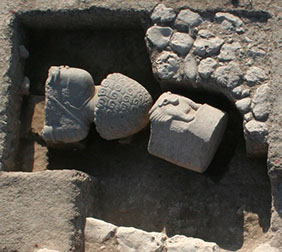
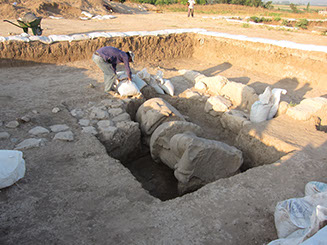
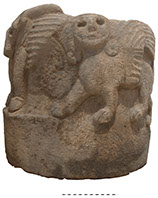
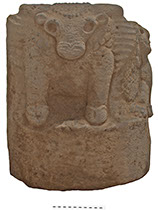
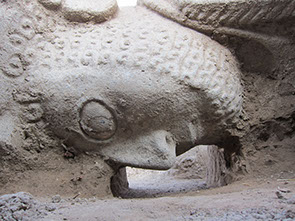
The inscription reveals the man to be named Šuppiluliuma King of Wallasatin, and likely was the Sapalulme identified in the Assyrian records who fought against the Assyrian King Shalmaneser III in 858. A Hieroglyphic Luwian inscription carved on his back provides an autobiography of his greatest accomplishments.
1. §1... but he became my opponent 1. §2 and from him I took away 8? lands 2. §3 and I put the border for him at the x-TAMI? 2. §4 and I, Suppiluliuma 3. [to] m[y]? father a stele er[ected?] 3. §5 ..[to the?] father [with?] "virtue"?, fullness?, in front of ... 3. (§6?) 100 cities, the city of x x, ...."

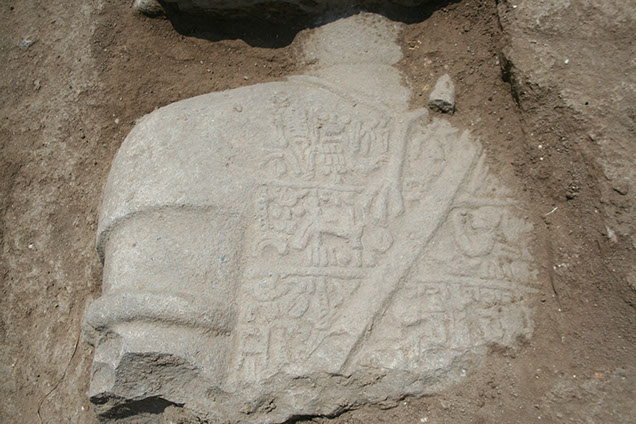
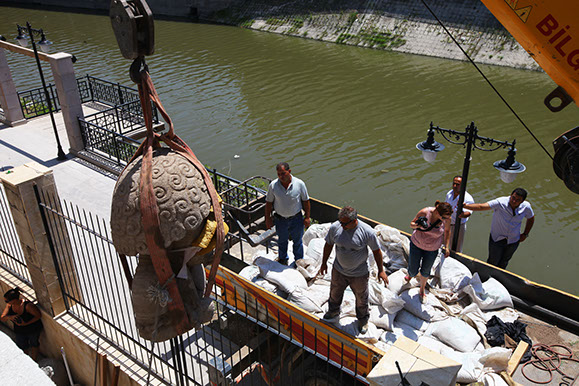
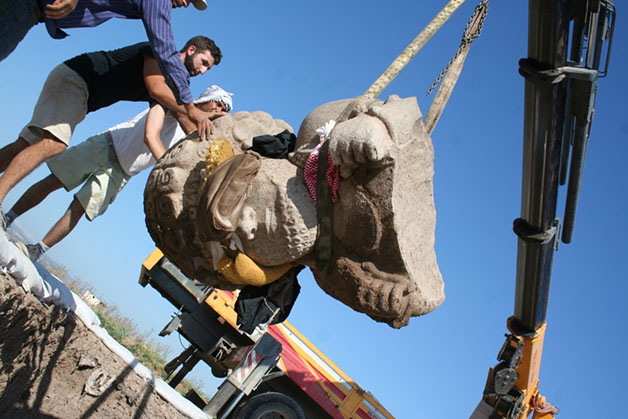
Upon its extraction, the statue was brought to the Hatay Archaeological Museum during the 2012 season, where it now sits in a prominent position at the entrance to the Tayinat exhibit.
Use your mouse to zoom and rotate. This application requires Flash Player 11.2 (for Stage3D support)
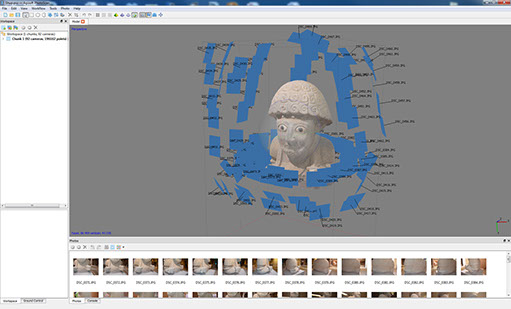
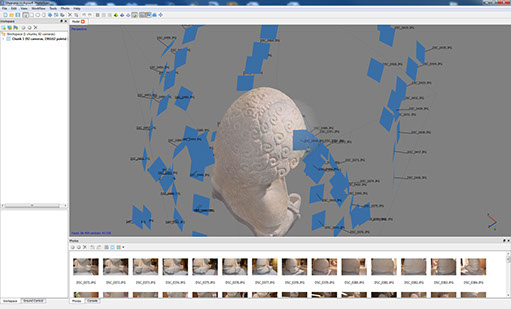
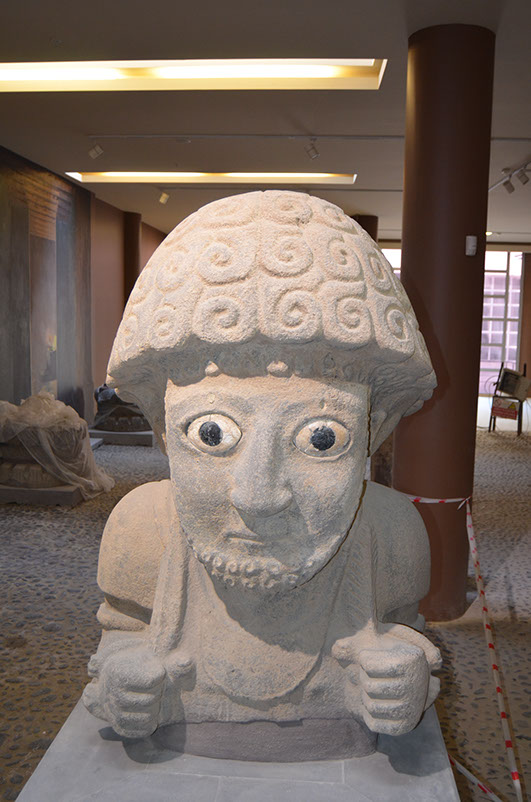
The image of the king is dominated by the visually striking eyes which were remarkably well preserved, comprising of a soft white limestone and black dolomite pupils. He bears typical stylized curls on his head and beard seen also on other Neo-Hittite statuary. Around his chest is a breast plate and on each wrist are lion-headed torcs. In his right hand he holds a spear, and in the left, what seems to be a sheaf of wheat.
A 3D model of the statue, which can be explored below) was created using AgiSoft Photoscan which has provided, and a program is being developed to try to use 3D models to of the various fragments found in association with the statue to virtually reconstruct the statue, before final physical reconstruction is attempted.
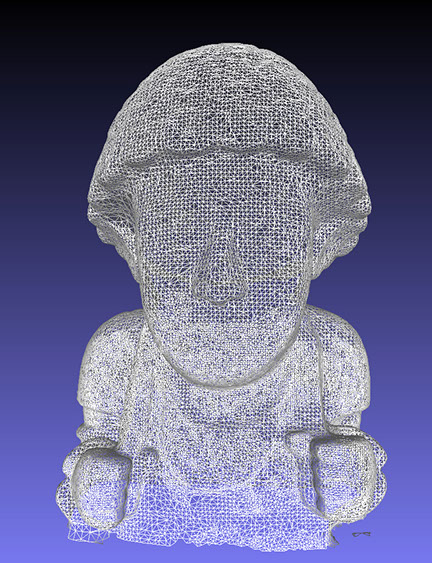
3D mesh model of Šuppiluliuma statue.
